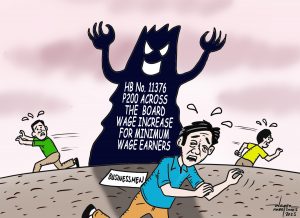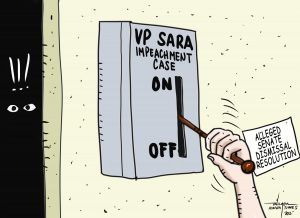DAVAOEÑOS need not fly by plane to the Visayas to enjoy the world- renowned “Boracay”. Unknown to many, we have our own stretch of pristine white sand beach just about 2 hours of land trip from Davao City to the south in paved, wide concrete highway. It’s also even called “LITTLE BORACAY”.
****
A few days ago, I joined my brothers Jimmy, Martin, Jr. and son Jay to a land trip to Malalag, in Davao del Sur to see their newly built “fish cages” in a cove by the sea called “Culagsing”. It’s a short 10-minute pumpboat ride from Malalag port. While there at the fishcage area, we decided to take a boat ride further on to the other side of the coast facing the Pacific Ocean.
Lo and behold! We saw from the boat a long stretch of white sand better- lookin than Boracay in Negros! It’s popularly called “Little Boracay”. Before reaching that area is a beach resort called “Haven”, also with sparkling white sand beach area and clear waters. A hidden paradise, indeed!
If you prefer to visit without taking a boat ride from Malalag port, one can do a short land trip all the way to Sta. Maria town, adjoining Malalag.
****
SEA OF FISHCAGES — Here’s another discovery. I was also totally amazed at what I saw. Across the Malalag port, I saw thousands, (about 10,000 I was told) of fish cages along the coastline of “Culagsing”, already part of adjoining Sta. Maria municipality. It’s a 10-minute pumpboat ride across from the Malalag port.
At night, the whole coastline sparkles and glitters like a bustling city with hi-tech solar lights installed all around by hundreds of fishcage owners.
****
GULF WAR & OIL CRISIS — I recall many, many years ago, the Malalag cove was the country’s favorite docking area of the global oil tankers and vessels marooned and had to seek shelter during that historic Gulf War and global oil crisis. Those vessels preferred to drop anchor there instead of being in Luzon ports.The “Culagsing” cove area was deep enough and sheltered from buffeting winds and waves not to mention cheap wharfage fees.
I recall always seeing, on my way to General Santos City during those times, many of those global tankers from the vantage winding road on our left side hundreds of feet from above in the hillside area ( called by locals “overview” as they could see below the whole view below). The foreign vessels and ships remained docked there for several years. I learned some of those oil vessels were cut to small pieces using welding machines and sold as “junk”.
Today, I don’t see anymore of that junkyard below. I see a bustling sea of fish cages!!
****
BANGUS GROWING — The bangus ( also called “milkfish”) is grown this way:
- very tiny “bangus” fries are first grown usually in fishponds or “punong” ( not in fish cages with nets as the fries are too small and can be barely seen by our naked eye). The tiny fries are supplied commercially by established companies with hi-tech facilities, usually from General Santos City.
- from fries, after about 3 months, they become about 6 inches in size called “garongan”.
- they are transferred from the fishpond to a fishcage to be grown. The fishcage is usually 10 meters by 10 meters in size with nets where the “garongan” is manually fed with commercially-bought “feeds”.
- After another 3 months or so at the fishcage, the fish is harvested for sale to the public, usually 2 to 3 “bangus” pieces per kilo.
****
NON-STOP BUSTLING — With thousands of fish cages jutting across the coastline in Culagsing, the Malalag port is a bustling non-stop hub with reefer trucks and haulers and fishcage workers. It’s an aquaculture activity that has not been affected at all by the pandemic.
But of course, my brothers Jimmy, Martin, Jr. and my son Jay who joined me in that trip had to comply with facemasks, face shields and some protocols lest we get waylaid, not by Covid19 but by underwater mermaid19 years of age.. ( But of course as you all know, I prefer the latter, Hahaha!)



